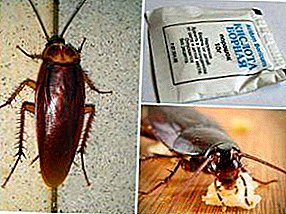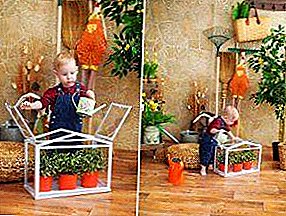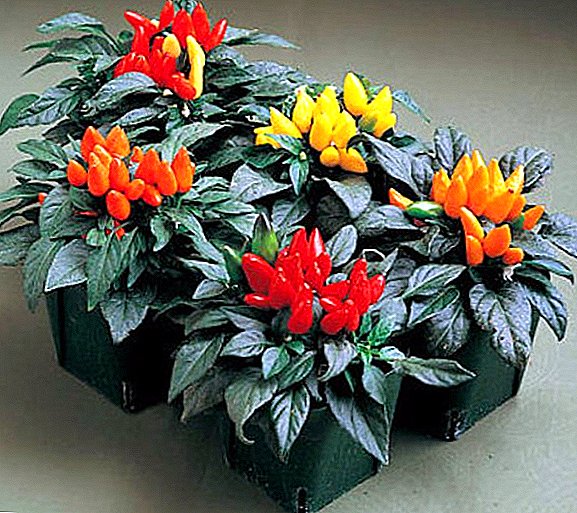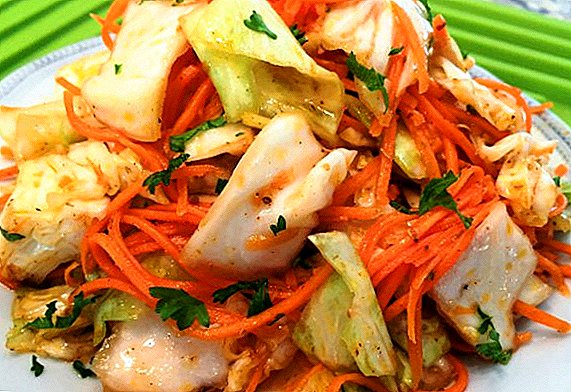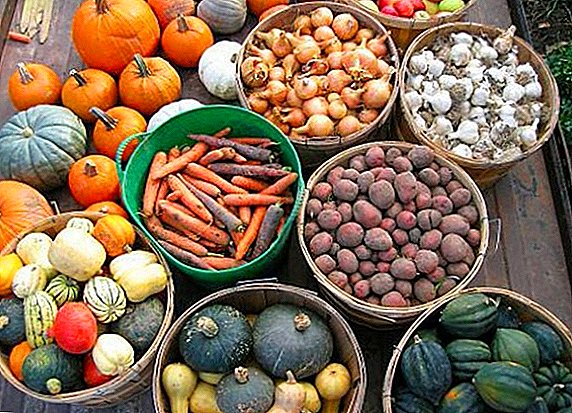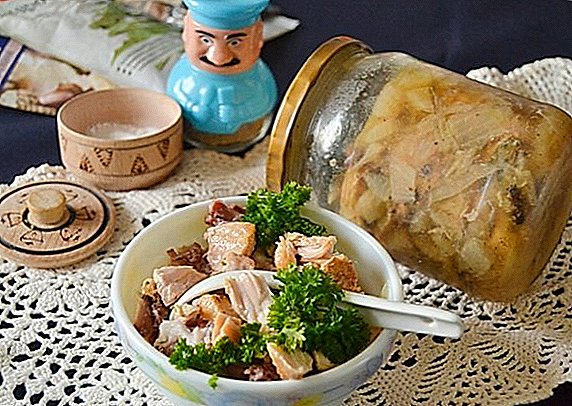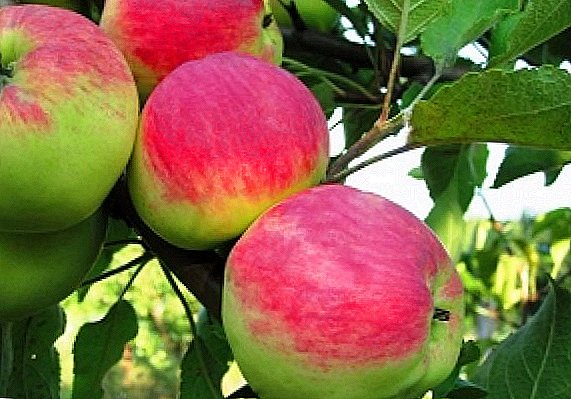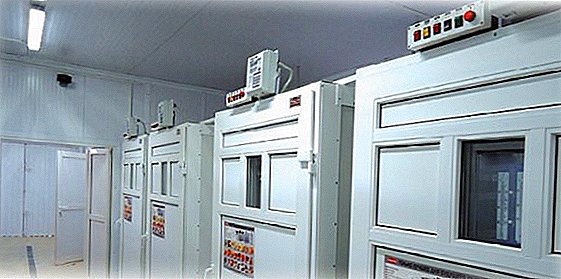 For successful breeding of poultry on a large scale, the use of professional incubation equipment is imperative. These devices allow you to increase the efficiency and profitability of the content of birds, guarantee the production of offspring, save a lot of time. One such device of domestic production is the Stimul-4000 universal incubator, which is not inferior to imported counterparts. Next, we consider in detail the features of the equipment, its parameters and functionality, as well as the process of incubating eggs in it.
For successful breeding of poultry on a large scale, the use of professional incubation equipment is imperative. These devices allow you to increase the efficiency and profitability of the content of birds, guarantee the production of offspring, save a lot of time. One such device of domestic production is the Stimul-4000 universal incubator, which is not inferior to imported counterparts. Next, we consider in detail the features of the equipment, its parameters and functionality, as well as the process of incubating eggs in it.
Description
The Stimul-4000 model incubator is manufactured by the Russian company NPO Stimul-Ink, which develops and manufactures incubation equipment. This device can be used in the farm for the incubation of eggs of all types of poultry.
Read the description and nuances of using such domestic incubators for eggs as "Egger 264", "Kvochka", "Nest 200", "Universal-55", "Sovatutto 24", "IFH 1000" and "Stimulus IP-16".
The unit consists of an incubation and hatcher chambers, the laying of eggs can be carried out simultaneously or add subsequent batches after a certain time, which allows you to maintain the incubation process year-round. This device is designed to work at a room temperature in the range of + 18 ... +30 ° C in a temperate climate zone.  The frame of the structure is made of polyurethane sandwich panels with a thickness of 6 cm. The outer layers are made of metal, and polyurethane foam is used as the insulation. This combination of materials allows to achieve high tightness and maintain a constant optimal microclimate. Doors and trays are made of plastic.
The frame of the structure is made of polyurethane sandwich panels with a thickness of 6 cm. The outer layers are made of metal, and polyurethane foam is used as the insulation. This combination of materials allows to achieve high tightness and maintain a constant optimal microclimate. Doors and trays are made of plastic.
Important! The incubator is equipped with an automatic egg turning system, however it is possible to do this in manual mode.
Specifications
The main technical parameters of the device:
- Dimensions (L * W * H, cm) - 122.1 * 157.7 * 207.
- Weight is 540 kg.
- The total power consumption is 3 kW, while 50% falls on the heating element, 1 kW on the fan drive motor.
- Food comes from a network of 220/230 V.
- The humidity level is maintained in the range of 40-80%.
- The maximum amount of water consumed per cycle is 1.5 cubic meters.
- The temperature is automatically maintained in the range of + 36 ... +39 ° C (deviations to both sides by 0.2 ° C are possible).
- Water is used for cooling at +18 ° C.

Production characteristics
The incubator is suitable for nesting eggs of all domestic birds: chickens, waterfowl species, quails, turkeys and ostriches. The maximum allowable weight of eggs should not exceed 270 kg.
It is very important to correctly determine the desired model, taking into account its characteristics and needs. Consider how to choose the right home incubator.
The parameters of the incubator trays:
- Trays for eggs. They measure 43.8 * 38.4 * 7.2 cm. In the complete set there are 64 trays, each contains 63 eggs. Total 4032 pieces can be placed.
- Trays for quail eggs. They have dimensions of 87.6 * 35 * 4 cm. There are 32 trays in the complete set, on each of which 310 eggs are placed. Total can accommodate 9920 pcs.
- Trays for duck, goose, turkey eggs. They have dimensions of 87.6 * 34.8 * 6.7 cm. The number of trays of this type is 26 pieces, each can accommodate 90 duck and 60 goose eggs. In total, a total of 2340 duck and 1560 goose eggs are obtained. On the same trays have ostrich products, the maximum can accommodate 320 pieces.

Incubator Functionality
The device has 2 heating elements, is also equipped with an eight-blade fan (300 rpm), cooling and heating systems, a system for maintaining humidity and air exchange. It is equipped with an electronic thermostat, an emergency shutdown system and an alarm system that is triggered at temperatures above 38.3 ° C.
Did you know? Rooster spermatozoa remain viable for several weeks, so more than a dozen eggs can fertilize.
There are two temperature sensors and one humidity sensor. Humidity is maintained by evaporation of water that is supplied through a spray on the roof of the housing. Air exchange occurs due to two holes with special flaps on the roof and the rear wall of the housing.
The trays are turned automatically every hour, while the trays of the trolley are inclined by 45 ° in both directions from the initial horizontal position. 
Advantages and disadvantages
Advantages of this model:
- Versatility - the device can be used in industries of different scale.
- It has a relatively small compact size. In addition, the manufacturer can supply the equipment in disassembled form (incubator and hatcher chambers separately).
- It consumes a small amount of electricity.
- The model is equipped with modern automation with the possibility of programmatic control of modes, which significantly saves time for servicing the incubator. Manual control mode is also available.
- The case and parts are made of high-quality materials that protect the internal space from fungus and infections, provide high tightness, resistance to disinfectants, resistance to corrosion.
- Perhaps backup power, which will ensure uninterrupted operation of the device during a power outage.
- The possibility of continuous incubation of eggs for many months.
 It is difficult to isolate the shortcomings of this model, since it has an optimal price-quality ratio. Definitely, it is not suitable for private farms and small farms.
It is difficult to isolate the shortcomings of this model, since it has an optimal price-quality ratio. Definitely, it is not suitable for private farms and small farms.Did you know? Despite the fact that eggs with a double yolk are quite common, the chickens from them will never work. Chicks simply will not be enough space for development inside.
Instructions for the use of equipment
The incubation process consists of four main steps.
Preparing the incubator for work
If you are using the device for the first time, it is recommended to measure the temperature in different parts of the incubator, the oscillations should be less than 0.2 ° C. If everything is OK with the temperature regime, you can proceed to disinfect the device.
It will be useful to know how and what to disinfect the incubator before laying eggs.
For this purpose, use any suitable veterinary drugs (for example, "Ecocide", "Brovadez-Plus", etc.). Need to handle all work surfaces, trays, doors. You also need to remove debris and waste from previous batches of eggs. 
Egg laying
Select products according to the following criteria: average size, clean, free of defects, chips, growths. Their shelf life should not exceed 10 days. Until the moment of bookmark, they can be stored at a temperature of + 17 ... +18 ° C in a room with high humidity. In no case can not lay cold eggs. Pre and need to gradually (!) Warm up to prepare for the heat.
Poultry farmers should familiarize themselves with the rules for raising goslings, ducklings, poults and chickens in an incubator.
When laying, remember that the egg size is directly proportional to the duration of the incubation period. Therefore, the bookmark is carried out in the following way: first, the largest specimens, after 4-5 hours, they are of medium size, and the last one is the smallest.
When choosing a bookmark method (vertical / horizontal), follow the rule: small and medium ones form only vertically with a blunt end up, large eggs (ostrich, goose, duck) are laid horizontally.
Video: Stimulus incubator-4000 laying eggs
Incubation
This period lasts on average 20-21 days, of which there are four periods. In 1-11 days, it is necessary to maintain 37.9 ° C of heat, humidity - at the level of 66%, turn the trays four times a day. There is no need for airing. In the second period, 12-17 days, the temperature decreases by 0.6 ° C, the humidity drops to 53%, the number of coups is the same, ventilation is added for 5 minutes twice a day.
At the third stage, in the next two days, the temperature and the number of turns are the same, the humidity drops even more - up to 47%, the duration of ventilation is increased to 20 minutes. At 20-21 days expose 37 ° C heat, humidity increase to the original 66%, airing reduced to 5 minutes twice a day. The trays in the last stage do not turn over.
Important! Eggs for breeding in the incubator can not be washed!
Hatching chicks
When hatching babies they are allowed to dry out and only then taken from the incubator, since the conditions in it are not suitable for the content of birds. 
Device price
The cost of this model is within 190 thousand rubles (about 90 thousand UAH., 3.5 thousand dollars). About the possibility of discounts should be interested in the manufacturer. It is possible to get separately an incubatory case or hatcher. The equipment is transported unassembled, assembly instructions are attached.
Employees of the company can also mount and adjust the work of the incubator free of charge, train your staff in the features of work.
You will probably be interested to learn how to make an incubator device for hatching chicks with your own hands, and in particular from the refrigerator.
Productive characteristics, compact size and low energy consumption make the incubator of this model an excellent choice for both small farm and industrial use. Its quality is equivalent to foreign analogues.
However, if you want to reproduce chicks in smaller volumes, it makes sense to study the model "Stimul-1000", which belongs to domestic varieties, and the price for it is 1.5 times lower.



